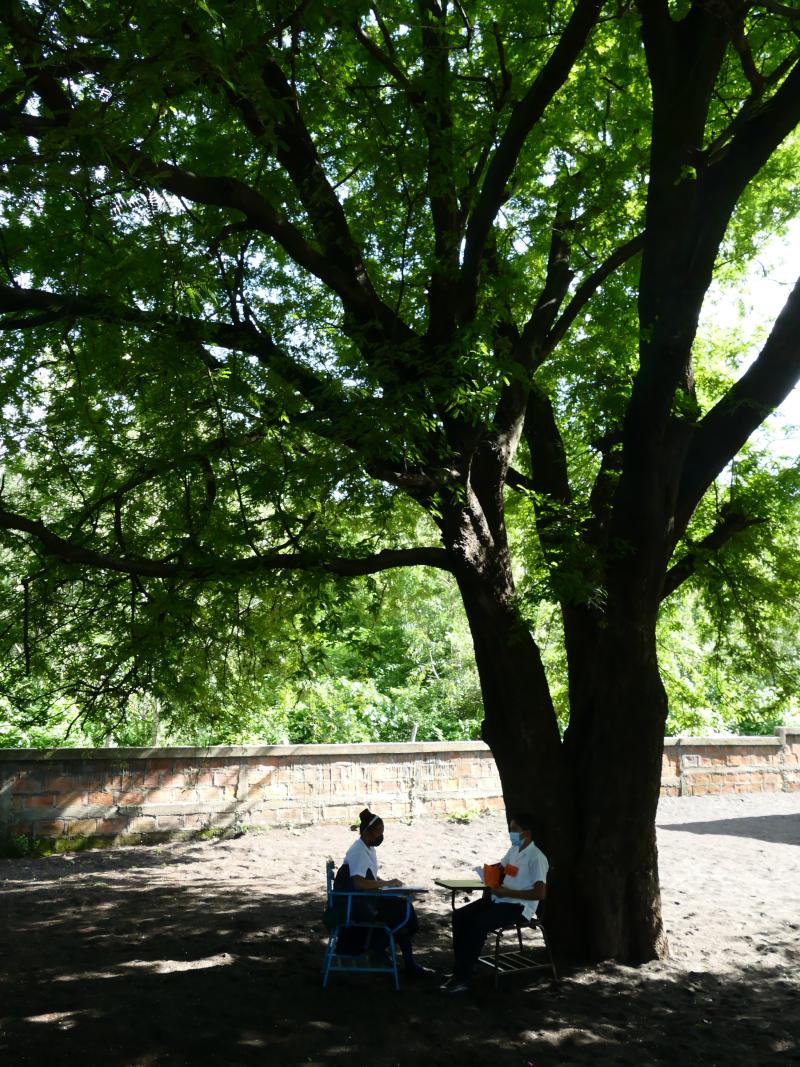
In Victoria, a town located in the interior of the Yoro department in Honduras, a story is told that seems to have been taken from a novel by García-Márquez. It is about a natural phenomenon in which it rains fish. It is hard to believe and, for the same reason, it fills us with curiosity and amazement. Is it real? When did it happen? Who saw it? Why did it happen? These types of questions are the starting point of a pedagogical innovation called Peer Tutoring (PT). This one, in particular, is about a tutorial topic developed in Honduras that deals precisely with a miraculous rain of fish.
Currently, the organizations Educación 2020 and Fe y Alegría, thanks to KIX’s contribution, through the GPE, are carrying out a pilot project where 40 rural schools in Honduras and Nicaragua are developing the Peer Tutoring (PT) strategy. In this process, the creation of tutorial topics allows teachers and students to create and recreate the curriculum based on their interests. Examples of this are themes created such as the rain of fish, and others such as a speech by Bertha Cáceres, the Garífuna story based on a verbally passed down tradition, or an adaptation of a poem by Rubén Darío called “The Motives of the Wolf”.
For its part, Peer Tutoring is a pedagogical strategy developed in Mexico in the 1990s by Gabriel Cámara that seeks to transform the social and educational reality by democratizing information and power relations in terms of knowledge (Meixi, 2016; Rincón-Gallardo, 2011). Transformation occurs because the building of knowledge is the result of a dialogue between the tutor and the tutored, in which there is a pedagogical content that is relevant to both, meaning that it arouses interest both in teaching it and in learning it. By recognizing the interests of both those that teach and those that learn, these become a fundamental aspect to promote curricular contextualization. In this way, the teacher becomes a mediator of knowledge, promoting that the students are the ones who can build it, based on a conversation made up of questions and answers, where the main objective is to recognize the learning rhythms of those who learn.
In addition, PT, beyond a specific content, seeks the development of skills and competencies in the students. Reading comprehension, perseverance, oral expression, autonomy and the ability to investigate are fundamental elements that are promoted through Tutoring (Cámara, 2020). Other skills are added, also favoured by the methodology: the development of a significant bond between the tutor and the tutored, confidence, self-esteem and the learner’s motivation (Cámara, 2020).
To achieve this, one of the fundamental aspects of this methodology is the creation of educational content called “tutorial topics”. A tutorial topic is a pedagogical design made up of a work objective, such as a text or mathematical problem, and a set of challenges associated with it, which promote a cognitive breakdown, and which require a display of skills and knowledge in order to be solved. These topics can be designed by both students and teachers, based on their learning interests within the framework of the national curriculum. In other words, the generation of a tutoring topic allows, on the one hand, the creation of a local curriculum, in the sense that it grants the power to include content relevant to the communities within the educational experience, at the same time that it allows teacher curriculum appropriation, who must link these contents with those proposed in the national curriculum.
Going back to the Rain of Fish, this topic, based on the reading of a local legend, allows students to develop critical thinking when they enquire into the nature of the fantastic stories that are typical of their country. At the same time that it promotes critical thinking and cultural identity, this topic makes it possible to work on expectations for curricular achievement such as: enjoy, interpret and develop an aesthetic sensitivity and critical appreciation of different types of children’s literature texts by writers from Honduras and the world.
Therefore, this methodology makes it possible to grant space to students interests regarding what they want to learn (and even teach), acknowledging their concerns, and enhancing their motivation and autonomy. In addition, by proposing content from local contexts, Peer Tutoring generates a break in the asymmetries of power between those who decide what is taught: both teachers and students now have that responsibility.
In this way, Peer Tutoring is in line with the future of the curriculum that Williamson (2013) envisions, proposing a change toward a decentralized curriculum based on skills, while recognizing the learning interests of students and their communities.
References
Cámara, G. (2020) Pedagogía que aprende de su práctica. Redes De Tutoría: Ciudad de México.
Meixi. (2016). Desdibujando los límites entre identidades personales y colectivas: La relación tutora en redes de comunidades de práctica para una transformación individual, colectiva y continua (Blurring the lines between personal and collective identities: Tutorial relationships in networked communities of practice for individual, collective, and continuous transformation). Revista Didac, 68, 27–35.
Rincón-Gallardo, S. (2011). La transformación del núcleo pedagógico como fuente de motivación docente en escuelas públicas mexicanas (The transformation of the instructional core as a source of teacher motivation in Mexican public schools). Didac, 59, 30–36.
Williamson, B. (2013). The future of the curriculum. School knowledge in the digital age. Cambridge, Mass.: The MIT Press.
